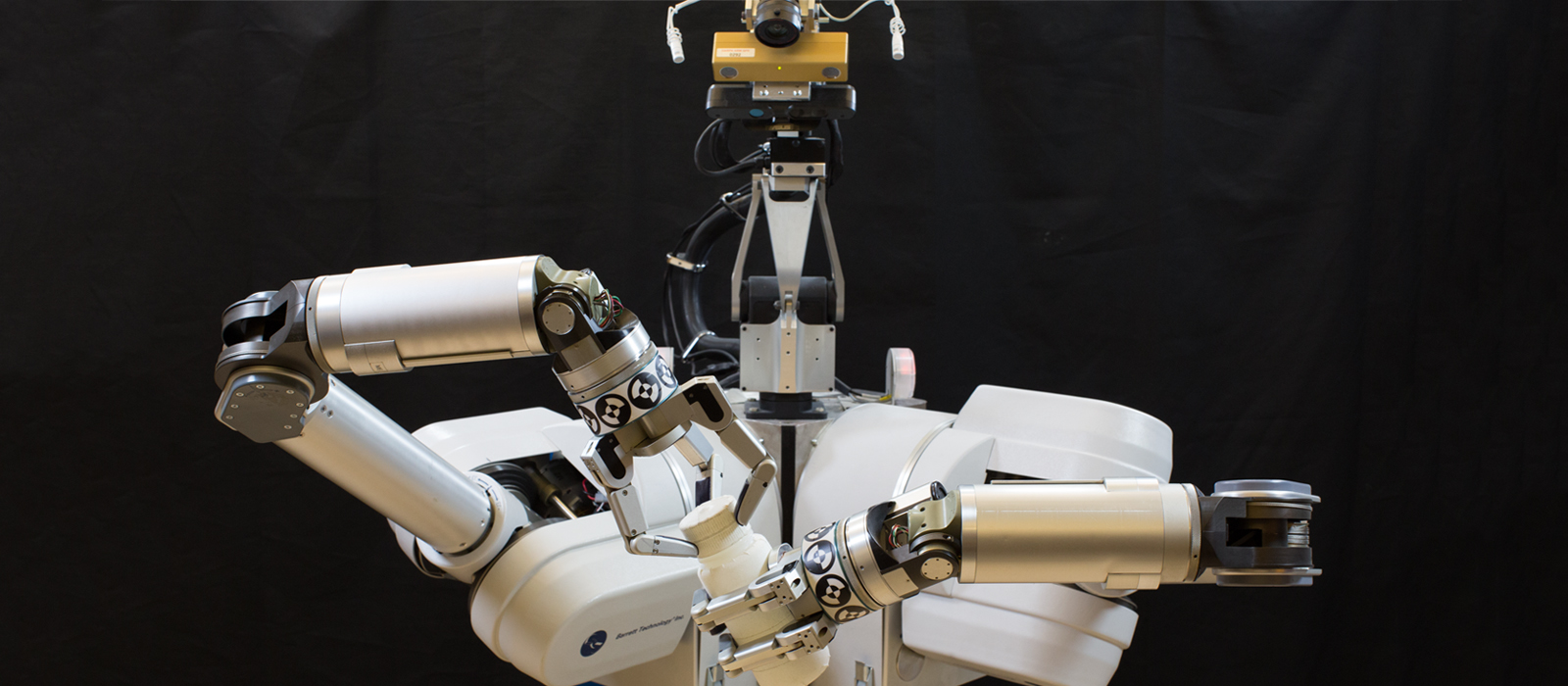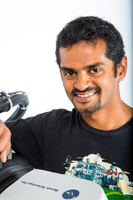Autonomous Robotic Manipulation
Modeling Top-Down Saliency for Visual Object Search
Interactive Perception
State Estimation and Sensor Fusion for the Control of Legged Robots
Probabilistic Object and Manipulator Tracking
Global Object Shape Reconstruction by Fusing Visual and Tactile Data
Robot Arm Pose Estimation as a Learning Problem
Learning to Grasp from Big Data
Gaussian Filtering as Variational Inference
Template-Based Learning of Model Free Grasping
Associative Skill Memories
Real-Time Perception meets Reactive Motion Generation
Autonomous Robotic Manipulation
Learning Coupling Terms of Movement Primitives
State Estimation and Sensor Fusion for the Control of Legged Robots
Inverse Optimal Control
Motion Optimization
Optimal Control for Legged Robots
Movement Representation for Reactive Behavior
Associative Skill Memories
Real-Time Perception meets Reactive Motion Generation
Associative Skill Memories

One challenge towards autonomous manipulation is to cope with uncertainty and noise in the sensory-motor system of the robot and the environment. We argue that such a system requires to close feedback control loops in novel ways, using predictive models and leveraging previous experiences.
Manipulation tasks often decompose into a sequence of skills, where each skill can be seen as a stereotypical movement, with respect to its goal frame. Assuming that movement dictates sensory feedback, sensory traces can be associated with the movement primitive (e.g. encoded as DMPs), forming Associative Skill Memories (ASMs) [].
ASMs allow to learn predictive models, which can be used to cope with uncertainty and noise in the perceptual system of the robots. ASMs have been successfully used to address several important issues towards an autonomous manipulation platform.
- Having a general skill library which allows to e.g. grasp an object robustly, the sequence of skills has to be determined based on the sensory feedback of the execution. [] showed how to incrementally determine a correct skill sequence despite perceptual errors using ASMs.
- Errors both in the perceptual and action system are inevitable. Predictive models learned from ASMs allow to predict failures in an online fashion [
].
- For robust manipulation errors have to be detected online and possible successor skills selected in real time. In [
] this problem is formulated as a data-driven online decision making problem, integration visual, acustic, and haptic sensors, as well as the system state to make real time decisions using the sensory information provided by the ASMs.
Interesting open research questions related to ASMs and manipulations are: Automatic skill decomposition; Learning good representation from unsupervised sensory information; Better failure incorporation.
[]
[]
Members
Publications





